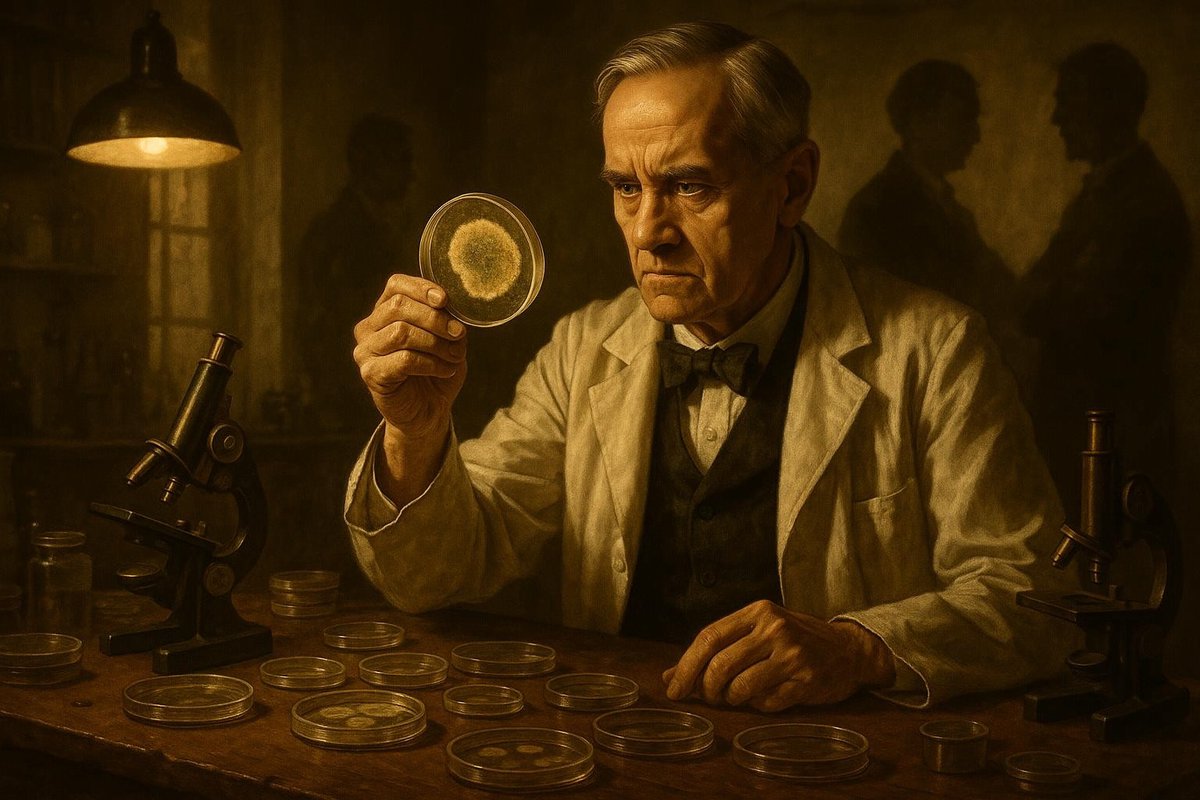
The discovery of penicillin stands as one of the most celebrated breakthroughs in medical history. But what if we told you it wasn’t just an accidental find? The journey behind penicillin unfolds like a dramatic novel, filled with unexpected turns, rivalry, and sheer persistence. Let’s delve into the fascinating story of how a simple oversight led to saving millions of lives worldwide.
The Accidental Find
- It was a careless oversight, a moment of serendipity that pushed Alexander Fleming into the pages of history.
Interestingly, in 1928, Fleming returned from a holiday to find that a petri dish of staphylococcus bacteria had been left uncovered. To his surprise, a mold had contaminated the culture, killing the bacteria around it. This mold, Penicillium notatum, sparked his curiosity and led him to investigate further.
Fleming’s initial reaction? Quite skeptical. He doubted his observations could lead to a practical application. In a world where chance often favors the prepared mind, Fleming’s meticulous nature and slight negligence collided gloriously. Isn’t it fascinating how a simple act of carelessness could ignite a scientific revolution?
Challenges and Rivalries
- Scientific progress is rarely solitary; it often involves intense competition and collaboration.
Despite Fleming’s identification of penicillin, turning it into a viable drug posed immense challenges. Many researchers believed the task insurmountable, casting doubt on its potential. Of course, not everyone agreed, and it ignited a race to develop penicillin into a usable form.
Howard Florey, Ernst Boris Chain, and their team at Oxford were pivotal in overcoming these challenges. Rivalries ensued as they sought funding and resources during wartime. The stakes were high; life-saving antibiotics were desperately needed. Their perseverance through trial and error, resourcefulness, and determination helped transform Fleming’s discovery into a miracle drug.
The Serendipitous Breakthrough
- Just as a story reaches its climax, penicillin’s path to success was anything but straightforward.
The Oxford team faced numerous obstacles, from stabilizing the compound to mass production. During a time when resources were scarce, they cleverly used unconventional means, such as milk bottles and bedpans, to cultivate penicillin. Their dedication paid off when they successfully treated a policeman suffering from a severe bacterial infection.
As time went on, mass production methods were refined, primarily thanks to American pharmaceutical companies. No wonder penicillin is celebrated as a wonder drug, given its dramatic journey from a serendipitous find to a global lifesaver.
A Legacy of Life
- The impact of penicillin transcends its initial discovery, shaping modern medicine for generations.
Many people believe penicillin’s legacy lies in its ability to combat infection, turning fatal diseases into treatable conditions. Its discovery marked the beginning of the antibiotic era, saving countless lives and transforming medical practices.
The human story behind penicillin’s discovery echoes the essence of scientific exploration: perseverance, curiosity, and the pursuit of knowledge. In a world where scientific endeavors are often fraught with challenges, penicillin’s journey serves as a testament to the power of human ingenuity and determination.
In conclusion, the discovery of penicillin is more than just a tale of scientific success. It’s a story of accidental discovery, fierce determination, and unwavering collaboration. As time goes on, its legacy continues to inspire scientists and researchers worldwide.
Fuel Someone Else’s Curiosity
If this story inspired you, why not share the wonder of penicillin’s discovery with others? Let’s spread the word about this remarkable journey and the lessons it holds. Share this article and spark curiosity in others. After all, stories like these remind us of the boundless possibilities of science.

Leave a Reply